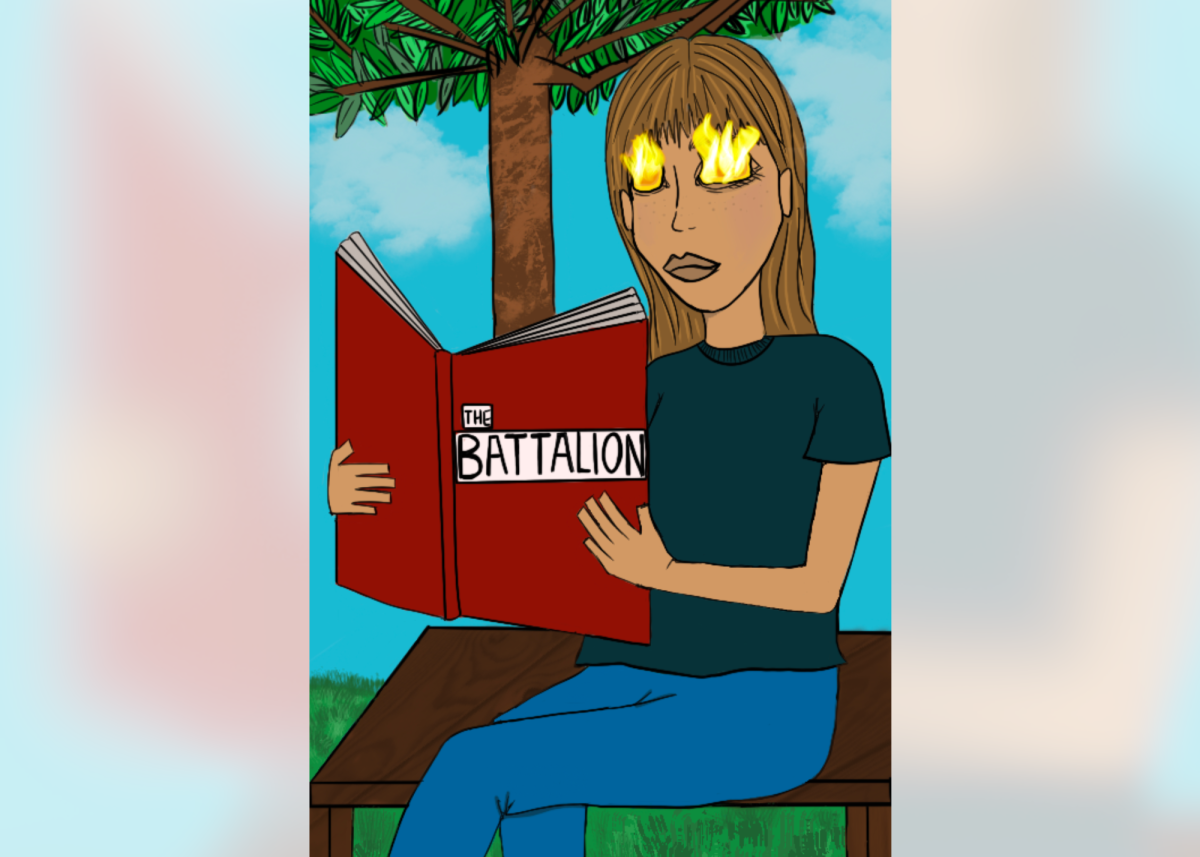If you asked a dozen people what the ROO means for our city, you’re going to get about a dozen different answers.
On April 19, the College Station City Council voted 5-2 to adopt the Restricted Occupancy Overlay, or ROO, into law. The center of much controversy, the ROO allows neighborhoods to restrict the occupancy of homes to no more than two unrelated people. Don’t panic yet — the ordinance isn’t a blanket decision for the whole city or even entire neighborhoods. Subdivision phases will now have to go through a predefined process of committees, petitions and approval from the city council for any rezoning.
To make the issue more complicated, there are a number of clauses voted on by the council that will define the long-term effects of a ROO in your neighborhood. If you’re not sure what to expect, then you’re not alone. Let’s cut through some of the noise and discuss what residents, and particularly students, should actually expect from a ROO.
-
What is the ROO?
(Source: Restricted Occupancy Overlay (ROO) Process Handbook)
“I think it fairly closely mirrors what Bryan has been doing since 2006,” Randy Haynes, the city of Bryan’s planning administrator, said. “As far as how it works? The sky hasn’t fallen in Bryan as far as I can tell.”
The ROO vote amends College Station’s prior Neighborhood Conservation Overlay, adopted in 2007, according to city staff. Before the ROO, the NCO was already very similar in design to the city of Bryan’s Residential Neighborhood Conservation District, Haynes said.
When first implemented, both the NCO and R-NC allowed historic neighborhoods to petition for specific design restrictions on new developments and renovations, but where the R-NC allowed the “two-unrelated” occupancy restrictions, the NCO did not.
-
Why the ROO?
“We’ll have telephone calls where someone asks, ‘Hey, tell me about that zoning where you don’t allow students,’ but we don’t have one of those,” Haynes said. “‘Tell me about that zoning where you don’t allow renters,’ Yeah, we don’t have one of those either.”
The ordinance in Bryan shares a parallel history to the ROO, Haynes said. When interest rates were low before the Great Recession, older neighborhoods were bought up by investors to redevelop into what Haynes called a “rule-beater” model. The new homes would meet the definition of a single detached residence, but inside were designed “really like an apartment house,” Haynes said.
Five or more grown adults would be living on what was designed as a single-family lot, causing infrastructure problems in Bryan, Haynes said. In particular, utilities like garbage collection, water and electricity took the brunt.
“We had all kinds of load put on a system that was never designed for it,” Haynes said.
In response, Bryan adopted the R-NC, and approximately 2,400 lots have been rezoned with more neighborhoods requesting rezoning since 2006, Haynes said. This change made Bryan one of many other university towns with degrees of occupancy restrictions.
(Figure 13. College Station Association of Neighborhoods, 2020)
But residents have asked at meetings, how do these design and occupancy restrictions actually prevent such “rule-beater” redevelopments?
I took a drive with Richard Woodward, president of the College Station Association of Neighborhoods and resident since 1997, to look at some of the neighborhoods that proponents of the ROO are concerned about. Woodward discussed why the NCO was adopted for the Pecan Tree-McCullough neighborhood, and why many Southside residents desire a ROO.
“This is a lower to middle class neighborhood and predominantly African-American,” Woodward said while turning onto Phoenix Street off of Holleman Drive. “One of the last vestiges of primarily African-American neighborhoods that’s left in the city.”
The homes in the McCullough neighborhood are largely ranch-style with backyards and two-car garages, and they range from approximately 20 to 40 years old, Woodward said.
“When a house like this is built on a street like this, it affects all of the property values on all of the houses,” Woodward said, pointing out one of the redeveloped duplexes built before the NCO was passed for Phoenix Street. “It also affects the taxes for all the properties because taxes are raised based on the neighborhood.
“The reason you can get that kind of value out of a neighborhood like this, a neighborhood that has been predominantly African-American and historically for families, is because of this,” Woodward said, turning onto Oney Hervey Drive, one street over from Phoenix Street.
Oney Hervey is completely lined with two-story student duplexes that began construction around 2014, many of which had up to six cars parked outside the entrances.
[Pictured: Google Street View capture of the entrance to Oney Hervey Drive in November 2012.]
[Pictured: Google Street View capture of the same entrance to Oney Hervey Drive in December 2016.]
The McCullough neighborhood was the first to adopt the NCO, which has since prevented more two-story duplexes from being built, according to both Woodward and city staff. However, many homes across the neighborhood could be seen being renovated into other models, indicating that investors still target many of the homes for redevelopment.
The Brazos County Appraisal District keeps extensive data on property roll value history, which backed up the claim that property values skyrocketed after redevelopment in these neighborhoods. On Oney Hervey Drive, multiple lots have seen over 500 and 600 percent increases in assessed value since their 2015 redevelopment.
“I’m not saying we don’t need student rentals at all,” Woodward said. “Students pay my paycheck. I am totally supportive of that, but we need places for families, too. What is really missing in this town are places where you can raise your family and know it will retain its affordable, single-family character.
“This is the type of thing that is pushing property values up the next street over. This is what we feared.”
-
Enforcement, and the Legacy Clause
[Source: City of College Station’s 2018 Existing Conditions Report]
At the core of the issue is how “relatedness” is defined and the potential for existing single-family homes to maintain their current occupancy under the ROO’s Legacy Clause. The amended Legacy Clause provides that if the ROO goes into effect in your neighborhood while you currently have four unrelated persons living together, that arrangement will remain unaffected. Even after selling a house and changing ownership, a legacy home maintains its occupancy level of two, three or four unrelated persons.
Thanks to amendments at the meeting, a property owner is allowed to maintain a lease that has four people on it, regardless of who they are over the years. The key responsibility of an owner is ensuring that the use of the property does not change, said Alyssa Halle-Schramm, the long range planning administrator for College Station.
“If you’re currently in a single-family house and convert it into a duplex to be rented out, you’ve changed the use and lose your grandfathering,” Halle-Schramm said.
The standards for use are defined here, and are mostly concerned with expansions or enlargements of the home.
-
Enforcement, and Defining Family
In March 2020, the city of College Station expanded the definition of family to include greater degrees of blood relation, guardianship and caretakers, in anticipation of the ROO proposal. Opponents say not all of their concerns about the definition were resolved, though. Alexia Hernandez, international studies junior and member of the Texas A&M Student Senate, spoke about some of these concerns.
“It’s not inclusive; even though they expanded the family definition, there are still people that live outside of that,” Hernandez said. “For example, when I was growing up, my mother had a roommate. There were often different people living with us at different times that were not related to my mother or I.
“But in those instances, we were still a family and operated as a household.”
The city council may reconsider how family is defined in the future, Halle-Schramm said, but argue that opening the definition too far is a “slippery slope” that makes it difficult for city staff to control. There is currently no waiver or variance to the definition of family, so any challenge in the future will have to go through the court system.
It is possible in the upcoming months that the ROO’s implementation will be stalled temporarily by lawsuits over enforcement, said Amy DuBose, executive of the Bryan-College Station Association of Realtors and member of the Anti-ROO Coalition. If not, the definition of family is likely to still be a hot button issue in the next election cycle.
City staff said they do not expect significant legal proceedings over the ROO. Since 2017, there have only been 202 complaints of occupancy violations, according to city staff. Of those complaints, only two cases went to municipal court and resulted in property owners paying fines ranging from $122 to $335. Residents can expect the same standards and methods of enforcement will be applied to the ROO, said Debbie Eller, director of the Department of Community Services, which oversees code enforcement. In Bryan from 2013-2018, only three cases went to municipal court, according to a 2018 presentation by Martin Zimmerman.
“I’ve never gotten the impression that it’s had harmful effects or disproportionately impacted any specific group or caused unaffordable housing issues,” Haynes said on enforcement.
The city of Bryan has only seen the market for housing increase in neighborhoods that adopt the R-NC overlays, explained Haynes. The fastest growing population in Bryan is not necessarily students, but persons in their 20s to 40s.
“At the northern end and southern end of Bryan, there’s been a lot of single-family homes being developed,” said David Lawless, a homeowner in Bryan since 2019.
Lawless has more than two unrelated persons living in his home, but said he did not experience any substantial limitations on the housing market. Cursory data from the Brazos County Appraisal District between when the R-NC was passed and 2021 further suggests there has not been a substantial increase or change in pricing.
“The value of homes has somewhat gone up,” Lawless said. “For rent in the area, it’s gone up pretty consistently with just the general trends of Texas. I wouldn’t say it’s increasing exponentially more compared to anywhere else.”
-
Moving Forward
One of the city staff’s stated goals in the coming years is to ensure residents know what it means to be in compliance with the ordinances.
“Instead of right off the bat writing a citation and penalizing them, we want to make sure that they have the information they need to come into voluntary compliance,” Eller said.
City staff in both Bryan and College Station described the ROO as “one tool in a toolbox” to combat the challenges of a growing populace. One such tool Bryan is implementing is the Pattern Zoning initiative. In the near future, Halle-Schramm said she expects the council in College Station to hold other workshops and hearings to explore initiatives of their own. When this happens, many Bryan-College Station residents say they want the councils to focus on housing affordability in ways that engage the community in the issue.
“It feels like there hasn’t been much of a plan for infrastructure to keep up with the population growth, which I think is a trend across the United States,” Lawless said.
Since 2010, the population of College Station alone has increased by 26 percent, according to the Existing Conditions Report.
“If they’re going to continue having these workshops and continue education, they need to completely rethink how they educate the public on this and who they reach out to,” Hernandez said.
She and other students who organized against the ROO believe the rhetoric used to discuss the ROO by the council turned the conversation far more divisive than it needed to be. Division and socially conservative rhetoric causes many young people to disengage from issues, Hernandez said.
“What I’ve learned about being a leader is that you can’t just expect people to come to you,” Hernandez said. “You have to start the conversation and reach them where they’re at. That’s the key to good governance.”
In a state that regularly ranks in the bottom 25 percent for voter turnout, both those for and against the ROO have urged the need for greater community engagement across the Brazos Valley. The ROO is a policy that has necessitated citizens working together for a cause, whether to establish one in their neighborhood or to lobby the city against it.
“Aggies love to come back,” DuBose said. “We have a lot of alumni that start businesses or own property because they have such fond memories of their time in College Station. So, if you aren’t engaged now and come back, you could possibly come back to a very different landscape of a community you once loved.”























